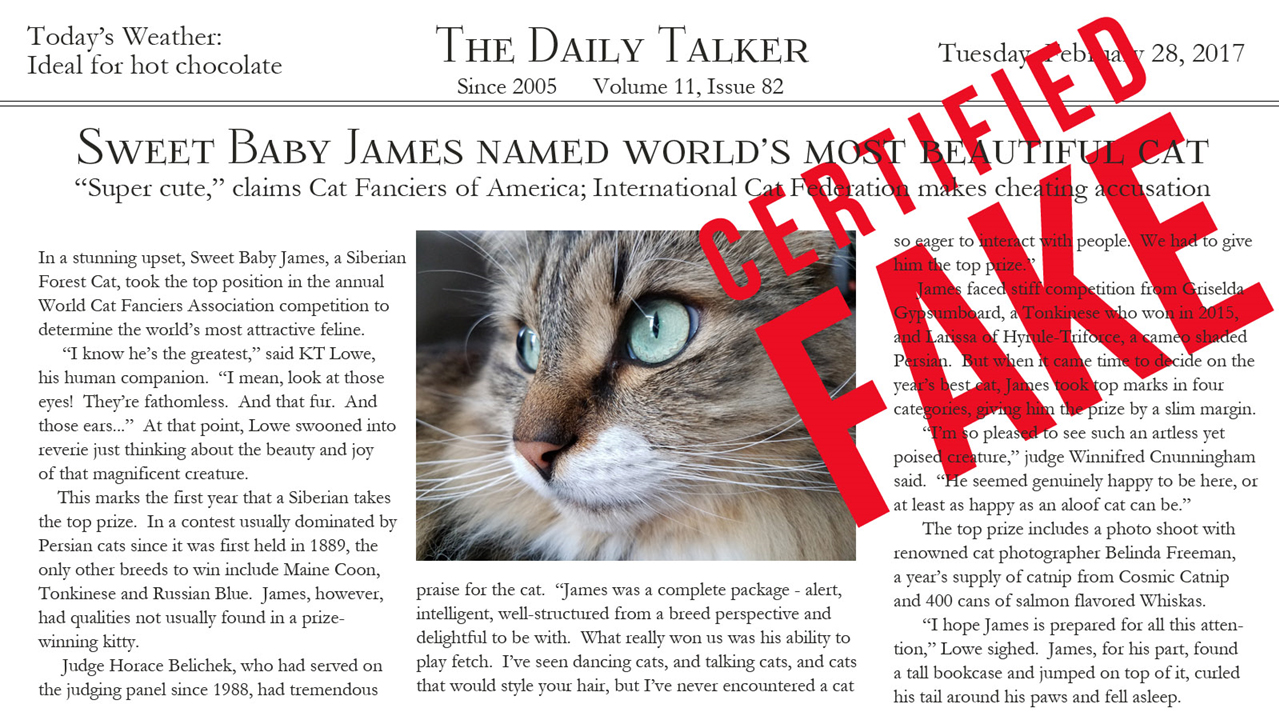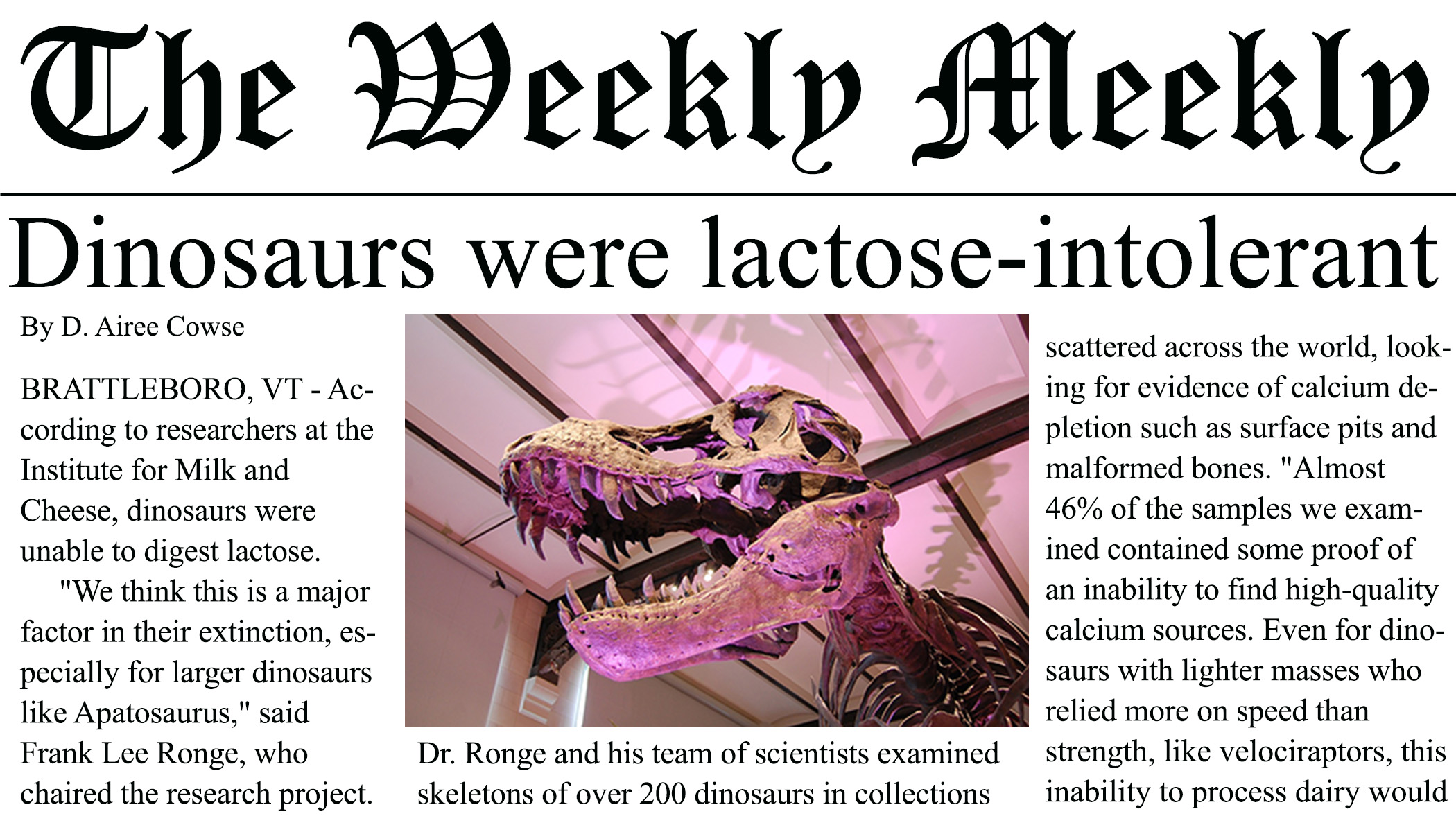Fake news feels like a modern scourge of intellect, but it’s nothing new. One of the earliest fake news examples on record dates to the first century, when Octavian, the adopted son of Julius Caesar, smeared the reputation of Mark Antony for control of the Roman Empire. Octavian, better known today as Emperor Augustus, read a will of dubious authenticity aloud to the Roman Senate. In that will, Mark Antony would give Roman lands to his children with Egyptian ruler Cleopatra and asked to be buried in an Egyptian tomb in the manner of a pharaoh. While the accuracy of this document can never be proven at this point, the fallout from Octavian’s act destroyed Mark Antony’s career and indirectly led to both his and Cleopatra’s deaths.

With over 2000 years of fake news, you would think that it would be easy to spot by now. However, judging from the current news climate coupled with reports such as this 18-month study with middle and high school students, it appears we as a society need to strengthen our ability to identify and fight fake news as we see it. Luckily, there’s a lot of things we can do.
The first and easiest thing to do is to not spread fake news in the first place. Mad-Eye Moody said it best: Constant Vigilance. Fake news is often characterized by a number of traits which can help you spot it quickly. A few of these are:
- It makes you angry, scared or, for some political stories, overly reassured
- It seems too good (or bad!) to be true
- It is not from a generally reputable source
- It does not cite its sources, or uses poor sources to back its claims
You’ll see fake news on the Facebook pages of many of your friends, but just because they believe it doesn’t mean it’s true. Even the smartest, most-educated people will make mistakes and post fake news sometimes. It’s up to you to sniff it out.

Second, if you want to share something online, check it first. Let’s look at a claim like “Farmed salmon is bad for you.” The article that this claim is based on uses lots of inflammatory language, bright colors and statements meant to alarm you. But don’t be fooled. A quick Google search for “Is farmed salmon bad for you?” will turn up a link to the Washington State Department of Health which refutes virtually every claim in the other, negative article. If you look at the author of the negative article, you’ll learn that he’s not a doctor, dietitian or nutritionist, nor does he have a degree in any medical field. He’s an editor and CEO of a popular magazine, which gives him lots of publicity but no weight to his arguments. On the other hand, the Washington State Department of Health does not operate at a profit, employs scientists and provides excellent, credible sources for its claims in this article. Even though it’s wise to consider the safety of your food, bad information doesn’t help anyone.
Third, if you accidentally post fake news – and everyone does – apologize and take it down from your feed. Some fake news outlets can look astonishingly like real ones (like this one) and you may not think you have time to verify what you’re reading. It’s always best to double check, however, to keep yourself well-informed.
Here’s a quick checklist to verify an article’s claims:
- Where is it located? Good articles and videos come from good news sources. What’s a good news source? Look for ones with strong codes or standards of ethics (like this one or this one) that clearly state their responsibilities to their writers, their sources and their readers. If you can’t find a standard or code of ethics, you will probably want to consider another news source. Other good sources of information are academic journals (which Indiana residents can find using INspire, the state library’s gateway to digital information access) and nonpartisan research organizations.
- Who wrote it? Look up the author using Google or LinkedIn, a professional networking site. Real news is written by real journalists, and you can often find pertinent information about them like resumes/CVs, other articles they’ve written and any other qualifications they may have, such as additional education or certifications.
- How old is it? Information, like fish, has an expiration date. Very often, old news is repackaged as current and articles without dates should be doubly suspect. Old news might rehash incidents or disputes that have since been resolved, or make you angry over something that is no longer true or applicable.
- Why was it written or developed? Fake news can be profitable – ask Jestin Coler, who registered a number of websites which produced fake news and made between $10,000 and $30,000 per month. Other reasons that fake news might be produced may be to sway political opinion, promote specific ideologies or beliefs or destroy a rival’s reputation.
Fake news may be everywhere, but you are smart enough to fight it. In addition to the above advice, I have developed a Fake News LibGuide with tools, tips, websites and other resources for you to use. You deserve honest, accurate information and you have every right to be mad that fake news outlets are trying to dupe you. Fight back with real news and real information. If you get stuck or lost, remember that the library is always there to help.
This blog post was written by KT Lowe, coordinator of library instruction and service learning at Indiana University East. You are welcome to contact her at lowekat@iu.edu or visit her on Facebook.

Awesome information, thanks admin for sharing such a great post with us,
Androidapk